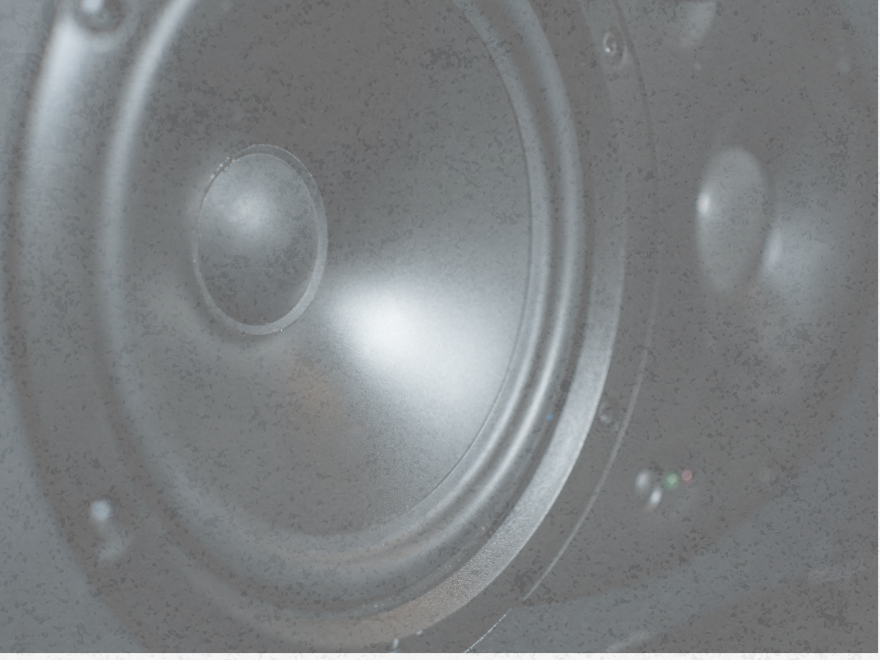The process of selecting the perfect speaker system is crucial so to achieve the most immersive and enjoyable listening experience. Two common types of speakers, bookshelf and floorstanding, offer distinct advantages and disadvantages depending on your needs and preferences.
Bookshelf speakers are compact, designed for placement on shelves or stands, and typically have a smaller frequency range. Floorstanding speakers are larger, designed to stand on the floor, and offer a wider frequency range and higher power handling.
In this article we'll look more closely at both bookshelf and floorstanding speakers main features to help you decide which one is best for your audio setup.
Difference Between Bookshelf & Floorstanding Speakers
Bookshelf Speakers
Description and Design
Bookshelf speakers are compact loudspeakers designed for placement on shelves, stands, or other elevated surfaces. They typically consist of a tweeter and a mid/bass driver in a sealed or ported enclosure, with sizes ranging from diminutive to moderately large.
Advantages
- Space-saving: The compact design of bookshelf speakers allows for easy integration into rooms with limited space, making them ideal for small apartments or urban dwellings.
- Budget-friendly: Bookshelf speakers tend to be more affordable than their floorstanding counterparts, providing a cost-effective solution for high-quality audio.
- Aesthetic versatility: Due to their smaller size, bookshelf speakers can be easily incorporated into various interior design styles, allowing for a seamless blend with your home's décor.
Disadvantages
- Limited bass response: Due to their compact size and smaller drivers, bookshelf speakers often struggle to reproduce deep, powerful bass. Which sometimes necessitates the addition of a subwoofer for a full-range audio experience.
- Need for speaker stands or mounts: To achieve optimal performance, bookshelf speakers require proper positioning on stands or mounts, which may increase overall cost and setup complexity.
Ideal Scenarios for Use
- Small to medium-sized rooms: Bookshelf speakers are well-suited for smaller listening spaces, where their focused soundstage and imaging can shine.
- Home theatre systems: Paired with a subwoofer, bookshelf speakers can effectively deliver surround sound in a home theatre setup.
- Desktop audio setups: For those seeking high-quality audio at their computer workstation, bookshelf speakers provide an excellent solution.
Floorstanding Speakers
Description and Design
Floorstanding speakers, also known as tower speakers, are large, free-standing loudspeakers that typically house multiple drivers, including dedicated woofers for bass, midrange drivers, and tweeters. These speakers are designed to deliver a full-range audio experience without needing additional components.
Advantages
- Superior bass response: The larger cabinets and dedicated woofers found in floorstanding speakers allow for deeper, more powerful bass reproduction, negating the need for a separate subwoofer in many cases.
- Greater overall output: With multiple drivers and larger cabinet volumes, floorstanding speakers can deliver higher output levels and greater dynamic range, which is particularly beneficial for larger rooms or for those who enjoy high listening volumes.
- Better soundstage and imaging: Floorstanding speakers often provide a more expansive soundstage and more precise imaging, creating a more immersive and realistic listening experience.
Disadvantages
- Larger footprint: Due to their size, floorstanding speakers require more floor space and may be more difficult to integrate into smaller rooms or spaces with specific aesthetic requirements.
- Higher price range: High-quality floorstanding speakers can be significantly more expensive than their bookshelf counterparts, making them a substantial investment.
Ideal Scenarios for Use
- Larger rooms: Floorstanding speakers excel in larger listening spaces. With increased output and bass capabilities floorstanders can be fully appreciated in bigger spaces.
- Dedicated listening rooms: For those with dedicated listening rooms, floorstanding speakers can provide an unmatched audio experience.
- High-end home theatre systems: When building a high-end home theatre system, floorstanding speakers can deliver the power, dynamic range, and immersive sound required for a truly cinematic experience.
Factors to Consider When Choosing Between Bookshelf and Floorstanding Speakers
Room Size and Acoustics
When deciding which type of speakers to get the size and acoustics of the listening space plays a significant role in determining which type is most suitable. In smaller rooms, bookshelf speakers may provide ample sound without overwhelming the space, while larger rooms may benefit from the increased output and bass capabilities of floorstanding speakers.
Listening Preferences and Music Genres
Perhaps one of the primary key elements in choosing the right speakers is listening habits. This can come down to preffered music genres. If you primarily listen to acoustic, vocal, or chamber music, bookshelf speakers may provide sufficient detail and clarity. However, if you enjoy bass-heavy genres or high-energy music, floorstanding speakers may offer a more satisfying experience.
Budget Constraints
Cost is an essential consideration when selecting speakers. There are high-quality choices for both bookshelf and floorstanding speakers at different price points. The importance is balancing your budget with your performance goals and put the most important features at the top of your list.
Aesthetic Considerations
The visual impact of your speaker choice should not be overlooked. Ensure that the speakers you select will seamlessly integrate into your living space and enhance your home's overall aesthetic.
Future Upgrade Plans
Consider the compatibility of your chosen speakers with additional components, such as subwoofers, amplifiers. Also surround sound systems, all of which have an impact if you intend on upgrading or expanding your audio system in the future.
Bookshelf and Floorstanding Speaker Comparison
Feature |
Bookshelf Speakers |
Floorstanding Speakers |
Size |
Compact, smaller size |
Larger, taller size |
Placement |
Shelves, stands, or mounted surfaces |
Free-standing on the floor |
Bass Response |
Limited, often requires a subwoofer |
Superior, deeper bass with dedicated woofers |
Overall Output |
Lower output, suitable for small spaces |
Greater output, ideal for larger spaces |
Soundstage and Imaging |
Focused soundstage, good for small rooms |
Expansive soundstage, more precise imaging |
Price Range |
Generally more affordable |
Typically more expensive |
Aesthetic Versatility |
Easily integrated into various design styles |
Requires more consideration for room layout |
Ideal Room Size |
Small to medium-sized rooms |
Larger rooms, dedicated listening spaces |
Additional Components Required |
May require stands/mounts and a subwoofer |
Less likely to require a separate subwoofer |
Integration into Home Theater |
Suitable for surround sound with a subwoofer |
Delivers powerful, immersive audio |
Preferred Music Genres/Listening |
Acoustic, vocal, or chamber music |
Bass-heavy, high-energy, or cinematic audio |
Conclusion
In summary, both bookshelf and floorstanding speakers offer unique benefits and drawbacks, with the ideal choice depending on factors such as room size, listening preferences, budget, and aesthetic considerations.
By giving these things some careful thought, you can make an intelligent choice that will make your home music experience move to a whole new level. Happy listening!



Share:
Understanding Passive and Active Bookshelf Speakers: A Comprehensive Guide
How to Properly Set Up and Position Your Bookshelf Speakers for Optimal Sound